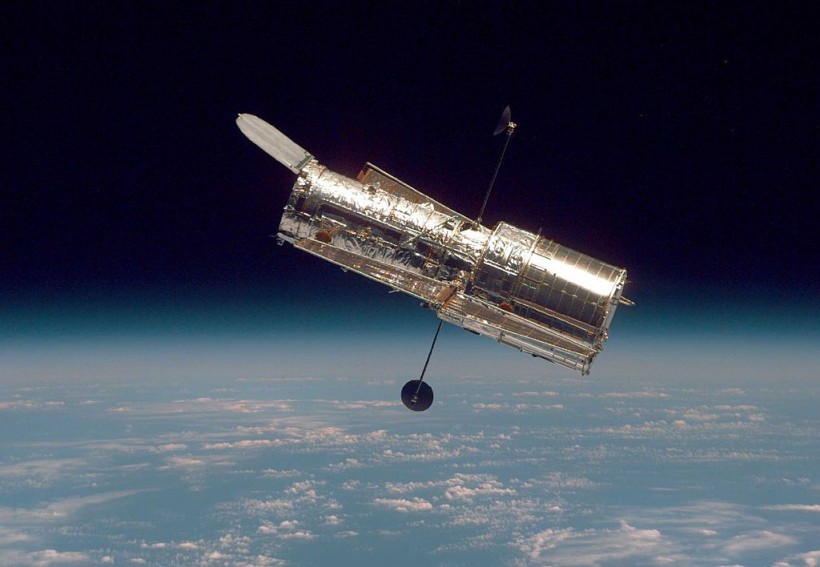The venerable space telescope of NASA has recently spotted gas and stars spiraling towards the heart of a gigantic, curiously shaped stellar nursery in the Small Magellanic Cloud nearby.
Astronomers think that this spiral of stars and gas' outer arm could offer a river-like flow of gas fueling star formation in the stellar nursery known as NGC 346, seen in the newly released photo captured by the Hubble Space Telescope, a Space.com report specified.
Hubble Space Telescope sees spiral of star formation in neighboring galaxy https://t.co/KqfISO30tE pic.twitter.com/xa8G6k8vrw
— SPACE.com (@SPACEdotcom) September 9, 2022
The finding could offer essential hints of how stars were born in the 13.8 billion-year-old galaxy was only a few billion years old and was going through a stellar "baby boom" of intense formation of stars.
According to Elena Sabbi, the study leader and an astronomer at the Space Telescope Science Institute in Baltimore, which handles Hubble, stars are considered machines sculpting the universe,
She added, "we would not have life" minus stars, and yet it is not fully understood how they form. Sabbi also said they have several prototypes making predictions; some of these forecasts are the opposite.
ALSO READ: NASA Hubble Space Telescope Captures Stunning Photo of 3 Galaxies Tearing Each Other Apart

In this handout from the National Aeronautical Space Administration (NASA), the Hubble Space Telescope drifts through space in a picture taken from the Space Shuttle Discovery during Hubble's second servicing mission in 1997.
Determining What's Controlling the Star Formation
The study leader also explained that they wanted to determine what controls the formation of stars since they are the laws and also needed to understand what was seen in the early universe.
NGC 346 is only 150 light-years in diameter and contains stellar material with a mass equivalent to 50,000 suns.
The Small Magellanic Cloud housing NGC 346 is just 200,000 light-years away from Earth.
This means that astronomers see younger light from farther galaxies that can show the early universe. Nonetheless, the dwarf galaxy is analogous to early galaxies in other ways.
Stars in the Small Magellanic Cloud
The Small Magellanic Cloud comprises a simpler chemical composition than the Milky Way, just like the early galaxies that had not been enriched yet with heavier elements by the subsequent generations of stars going supernova, bursting, and seeding space with elements they forged during their life.
Due to this chemical simplicity, the stars in the Small Magellanic Cloud are hotter and burn through fuel faster than the stars in the Milky Way. This means that they're aging faster than our galaxy's stars.
Yet, despite the differences, the study investigators found that the formation of stars in the Small Magellanic Cloud is similar to how it's doing in the Milky Way.
Gauging Changes in the Galaxy of Stars Over 11 Years
To examine the star formation in the Small Magellanic Cloud, astronomers turned to the Hubble Space Telescope and the VLT or Very Large Telescope in northern Chile to examine star motion in two unique ways.
Sabbi, along with her team, used Hubble to gauge changes in the positions in the galaxy of stars over 11 years. The stars are moving at a speed of approximately 3,200 kph. This means that for more than 11 years, they shift around 200 million miles or just more than twice the distance between the sun and the Earth.
However, this remains a small distance when viewed from the perch 150 light-years away. This means that it took Hubble's power to spot and resolve the said stars' tiny shifts in position.
In this research published in the Astrophysical Journal, the researchers said what was amazing is that they used two completely different approaches with different facilities and they concluded.
With Hubble, the statement specified, one can see the stars, although, with MUSE, the gas motion can also be seen in the third dimension, which validates the theory that everything is "spiraling inwards."
A report about the spiraling stars is shown on Space.com's YouTube video below:
RELATED ARTICLE: NASA Hubble Space Telescope Spots a Weird Pair of Interacting Galaxies
Check out more news and information on Space in Science Times.














